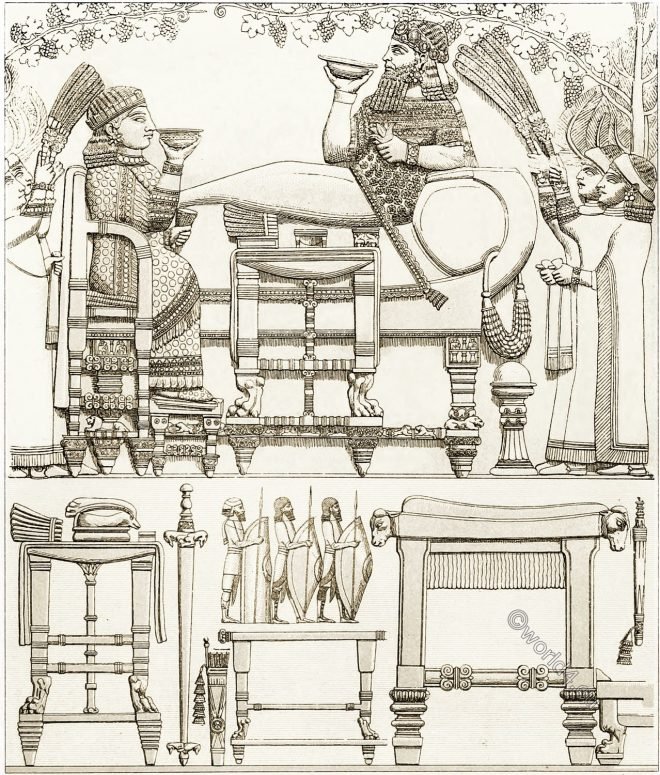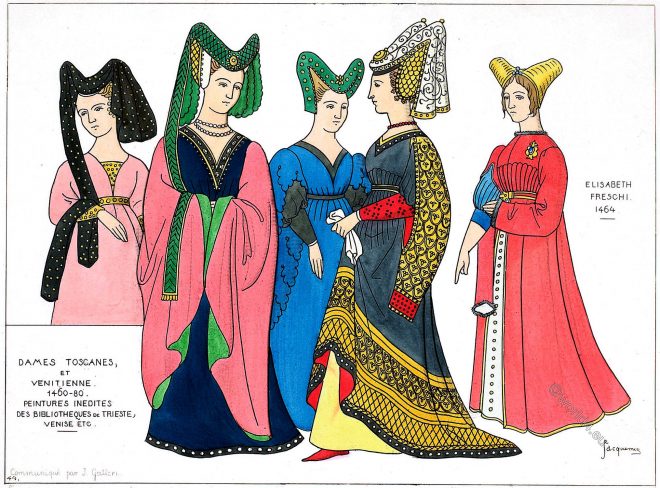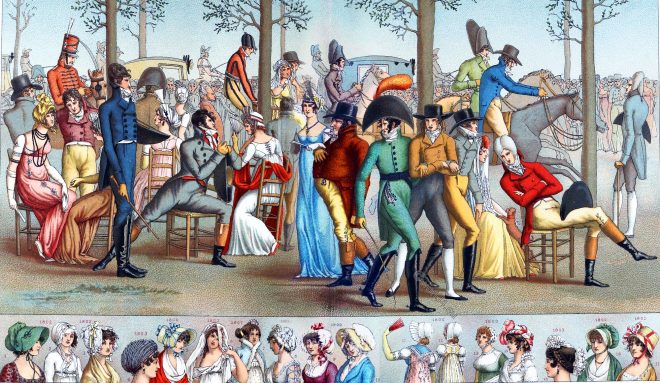Greece. Women’s costumes. The main piece of clothing was the chiton, in Roman times the tunica, a long, folded piece of textile that was wrapped around the body
Assyrian-Babylonian culture. Costumes, weapons, furniture.
Assyrian-Babylonian culture of the ancient world. Furniture, architecture, rulers, soldiers, weapons, slaves, customs.
Tuscan and Venetian Ladies 1460-80. Medieval Italian fashion.
Tuscan and Venetian Ladies 1460-80. Unpublished paintings from the Libraries of Trieste, Venice etc.
Feminine costumes from 1794 – 1800. Directory to Empire.
The figures are all taken from fashion journals. The period includes the last period of the convent, the rule of the board of directors and the beginning of the consulate.
Greece. Warriors of heroic and historical time. Leaders and Soldiers.
The armament of the heroic period. The Greek army. The Hoplit, the Peltast, The Rider, the Phalangit, the Archer, the victorious Warrior, the Great Goddesses of war and hunting, Athena and Artemis. The Purpure. Bourgeois costume at the time of Ptolemy.
Hairstyles and headgear in ancient Greece. Historical Greek fashion.
GREECE. ANTIQUE HAIR AND HEADGEAR. The women of Greek antiquity knew how to achieve a great variety in the arrangement of their hair. Veils of light or precious fabric, ribbons of various colours, flowers and fragrant ointments were often used in artistic hairstyles.
France. At the horse race at the Promenade de Longchamp. 1802.
France. The fashions under the consulate. Fashionable Parisians enjoy a beautiful spring day at the horse race at the Promenade de Longchamp in 1802.
Italy. Folk costumes in the Provinces of Rome and Ancona.
In the surroundings of Rome the picturesque costume of the contadini (farmers) has almost disappeared. Only occasionally do you see entire families of country dwellers in national costumes on the streets.
Jalali. Mohammedan Faqir. Sufi Muslim ascetic. Suhrawardiyya saint.
Jalali.-A class of Mohammedan Faqirs who take their name from their founder Sayyid Jalal-ud-din a pupil of Bahawal Haqq the Suhrawardiyya saint of Multan.
The armorial bearings of the Monarchs of The Royal House of Normandy.
The Royal House of Normandy. Regal heraldry; the armorial insignia of the Kings and Queens of England. William I, William II, Henry I, Stephen. Queen, Matilda










